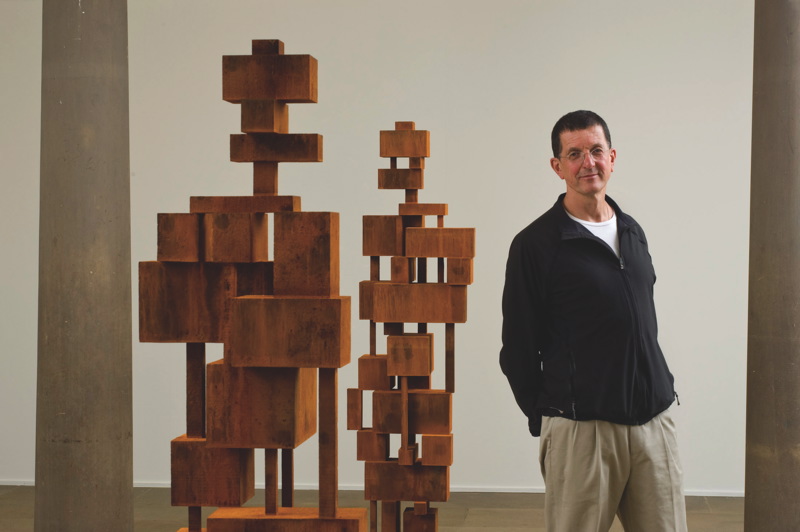Preview: Two States
Antony Gormley tells Richard Smirke about his latest sculpture work, Two States, and why he’s happy to break the mould
The first time that Antony Gormley visited Harewood House, located just outside Leeds, it was with one specific intention in mind: to see Sir Jacob Epstein’s Adam, the gigantic alabaster carved male nude that dominates the building’s entrance hall. It is, he says with no hesitation, “one of the greatest 20th century works ever”.
“What Epstein was interested in was how can basic human emotions to do with sex and death get into an inanimate object,” he explains, relaxing on Harewood’s picturesque veranda. “Sculpture has never been the same since.”
Later in the evening, Gormley can be witnessed extolling the virtues of Epstein’s world-famous 1939 work to a small selection of friends – his face conveying a mixture of awe, admiration and boyish enthusiasm as he walks around the 7ft tall heroically endowed sculpture. Right now, however, he is happily discussing his own contribution to Harewood’s artistic heritage, the world premiere of two new sculptural works collectively entitled Two States.
“It’s a huge privilege to be showing here,” he states sincerely. “Places do give rise to works and I would like to think that there is a symbiosis here and that the architecture in some sense reinforces the formal proposal of the work.”
On display in Harewood House’s neo-classical Terrace Gallery, Two States, like a lot of Gormley’s sculpture, takes the form of two life-size human bodies forged from smelted iron. Where they differ from his most famous creations, such as Gateshead’s Angel of the North or Another Place, the collection of 100 iron men staring out to sea, located at Crosby beach, Merseyside, is that both works are made up of dozens of differently-sized iron blocks strategically piled atop each other. Viewed from a distance, they looked like a giant mesh of Meccano and rusty metal. Up close, legs, arms and heads become apparent, although human characteristics such as lips, eyes, hair and expression are entirely absent.
“They are the absolute opposite of traditional statues in that they are not about representation and they are not about a known character in a known narrative,” explains their creator, who considers the two pieces a direct continuation of the “block works” that have been his focus for the past four years. Asked to explain the inspiration behind the modernist sculptures, he describes them “an attempt to make a physical pixel, to acknowledge that representation in our time is no longer to do with the understanding of anatomy, but has been taken over by mechanical means of recording and the way that visual information is now carried by bits and bytes.”
Gormley iadmits that not everyone who views Two States will necessarily take that reading away with them. “I’m sure people will think: ‘Oh, what have I come all the way here for, just to see a couple of rusty lumps of iron?’” he jokes, dryly. “But I want people to think about what an extraordinary thing the body is.”
Famously, the London-born artist, who stands a trim six feet four tall and has a handshake that could crush granite, uses a mould of his own body as the basis for most of his work. In the process, he has become Britain’s most famous living sculptural artist, but his fascination with the human shell continues to inspire and drive him.
“I’m very interested in dance,” he says by way of an explanation. “Dance uses the body in time. I use the body in space and I’m still amazed at the infinite possibility that there is within that. I’ve reduced it to a very basic level.
“None of my sculpture really does anything. They’re not gestures so they accept the inertia and silence of sculpture.
“But I think that’s what good about it. The fact that they are remote, aloof, separate from life and then you put them in life and something magical happens.”
Two States is on display at Harewood House, Leeds until 30 October

Leave a reply
Your email address will not be published.